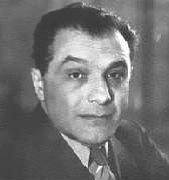P-47N Thunderbolt - my favorite version of the P-47 series aircraft.

From: Republic P-47 Thunderbolt, by The Aeronautical Staff of Aero Publishers, Inc. in cooperation with Edward T. Maloney, curator of The Air Museum, Aero Publishers, Inc., 1966

From: Republic P-47 Thunderbolt, by The Aeronautical Staff of Aero Publishers, Inc. in cooperation with Edward T. Maloney, curator of The Air Museum, Aero Publishers, Inc., 1966

http://richard.ferriere.free.fr/3vues/p47n_3v.jpg

From: American Aircraft of World War II, by David Mondey, Chancellor Press, 1996, p 222.
Partial Quotes from:
THE REPUBLIC P-47 THUNDERBOLT
http://www.chuckhawks.com/p47.htm
Robert S. Johnson and Martin Caidin collaborated on Johnson’s memoirs, which dealt intimately with the P-47. Their book is aptly titled Thunderbolt, and tells the story of the famous 56th Fighter Group. Johnson was one of the top U.S. aces of the war, with 28 victories, all flying the P-47. He was sent to Europe to fly and fight in January 1943, and returned home in the middle of 1944 as the leading American ace. The 56th Fighter Group, which included legendary aces like Johnson, Zemke, and Gabreski, shot down 1006 German aircraft against the loss of only 128 P-47’s, a kill ratio of 8 to 1 against the stiffest competition in the world.
[b]The last P-47 variant to achieve series production was the P-47N. This model was designed specifically for the pacific theatre, where very long range was a requirement. The “N” used the same engine as the “M”; late production models received the P-2800-77 engine. A new, stronger, wing with squared tips was designed, which incorporated eight internal fuel cells. The landing gear was strengthened to deal with the increased weight of the aircraft. From the P-47N-5-RE model on, zero length rocket launchers were added beneath the wings.
Habitability improvements included an automatic pilot, an armchair seat, and folding rudder pedals to give the pilot increased leg room. These improvements were intended to increase the pilot’s comfort on long escort missions.
Maximum speed was 467 mph at 32,500 ft. Initial climb was 2,770 ft./min., and the range on maximum internal fuel was 2,350 miles. The P-47N saw extensive use in the last months of the Pacific War, and had the range to escort the B-29’s all the way from Saipan to Japan. Between December 1944 and December 1945 a total of 1,816 P-47N’s were manufactured.
A total of 15,677 P-47 Thunderbolts of all types were built before production ceased at the end of 1945. More Thunderbolts were produced than any other USAAF fighter.[/b] (The P-51 was second with 15,386 produced; the P-40 was third with an even 15,000 produced; the P-38 was fourth with 10,037 produced.) In addition to the USAAF, during WW II P-47’s were sold or supplied to Brazil, Free France, Mexico, the UK, and the USSR. After the war, surplus P-47’s were operated by the Air Forces of Bolivia, Chile, China, Columbia, Dominican Republic, Ecuador, Honduras, Iran, Italy, Nicaragua, Peru, Portugal, Turkey, Venezuela, and Yugoslavia.
P-47N Thunderbolt - Specifications
http://www.ww2incolor.com/forum/showpost.php?p=90329&postcount=81
http://library.thinkquest.org/2819/p-47n.htm
http://www.cavanaughflightmuseum.com/Thunderbolt.htm
http://rwebs.net/ghostsqd/p-47.htm
http://www.acepilots.com/planes/specs.html
General characteristics
Maker: Republic Aviation Corporation
Type: Single-seat fighter-bomber
Crew: One
Length: 36 ft. 1 in. (11.07m)
Wingspan: 42 ft. 7 in. (12.98m)
Height: 14 ft. 8 in. (4.47m)
Wing area: 332.2 sq. ft. (30.86 sq. m.)
Empty weight: Empty 10,994 lb. (4,987 kg.)
Max takeoff weight: 20,699 lb. (9,389 kg.)
Powerplant: One 2,800-hp Pratt and Whitney R-2800-57,-73,or -77 18-cylinder two-row radial engine
Performance
Maximum speed: 467 m.p.h. (752 km/h) at 32,500 ft (685 km/h at 9,145 m)
Range: 2,170 miles (3,492 km.) with drop tanks
Service ceiling: 43,000 ft (13,100 m)
Rate of climb: 3,120 ft/min (15.9 m/s), other sources 2,770 ft/min
Armament
8 x 0.5 in (12.7 mm) M2 Browning machine guns
Up to 2,000 lb (907 kg) of bombs
10 x 5 in (127 mm) unguided rockets
10 x 5-inch HVAR air-to-surface rockets




